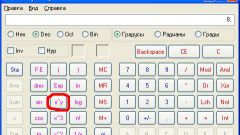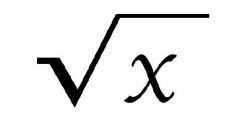Instruction
1
Try to decompose the number into Prime factors. If the number is decimal, not a comma yet, consider, consider all the numbers. For example, the number of 8.91 can be expanded as: of 8.91=0,9*0,9*11 (first place 891=9*9*11 then add the commas). Now you can record the number of 0.9^2*11 and to withdraw from the root of 0.9. So you got √of 8.91=0,9√11.
2
If you are given a cube root, you need to display underneath the number to the third power. For example, the number 135 decompose as 3*3*3*5=3^3*5. From under the root, print the number 3, the number 5 will remain under the root sign. Exactly the same goes with the roots of the fourth and higher degrees.
3
To bring out the root of the number with a degree other than the degree of the root (e.g., square root, and under it the number in grade 3), do so. Note the root degree, that is, put the sign √ and put in place a sign degree. For example, the square root of a number equals the same number of degree½, and a cubic – to the power of 1/3. Do not forget to enclose the radical expression in parenthesis.
4
Simplify the expression multiplying degree. For example, if the root was 12^4, and the root was square, the expression takes the form (12^4)^1/2=12^4/2=12^2=144.
5
To withdraw from the sign of the root is possible and a negative number. If the degree is odd, just imagine the number under the root as a number in the same way, for example, -8=(-2)^3, the cube root of (-8) is equal to (-2).
6
To make a negative number under an even root of a degree (including square), do so. Imagine radical expression as a product of (-1) and the number in the right degree, then take the number leaving (-1) under the root sign. For example, √(-144)=√(-1)*√144=12*√(-1). The number √(-1) in mathematics called imaginary numbers, and denoted by parameter i. Thus, √(-144)=12i.



